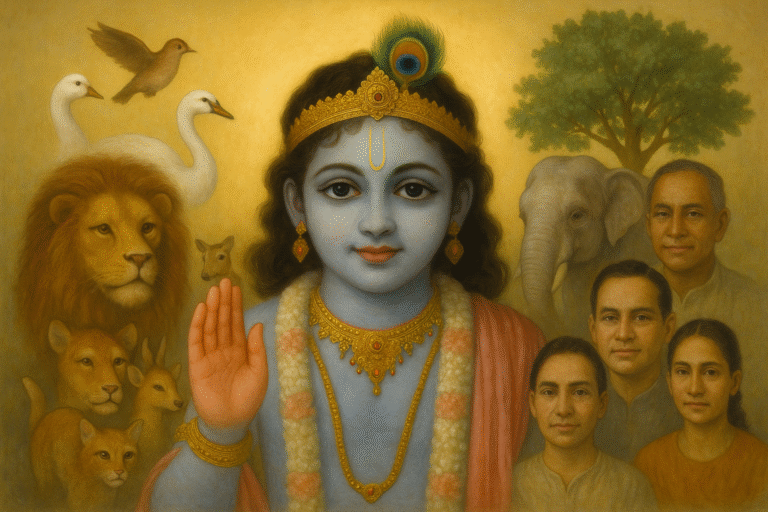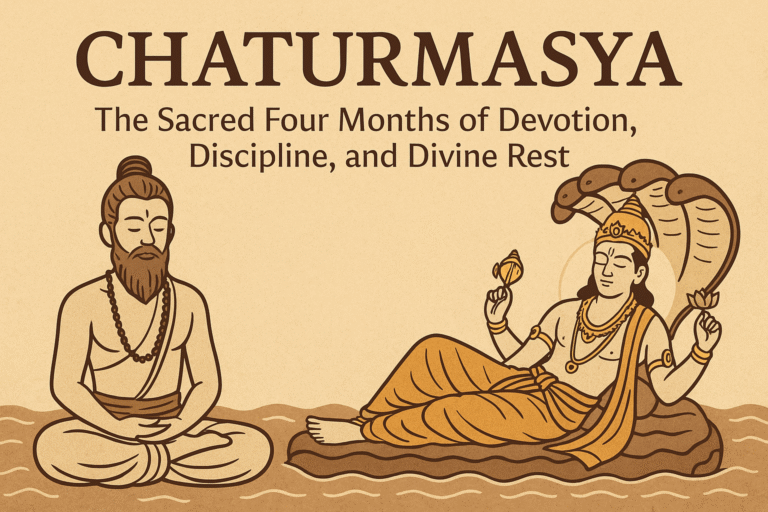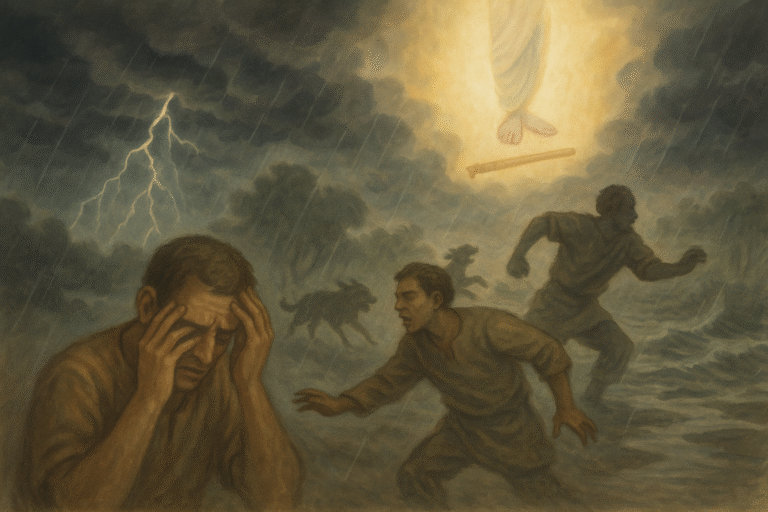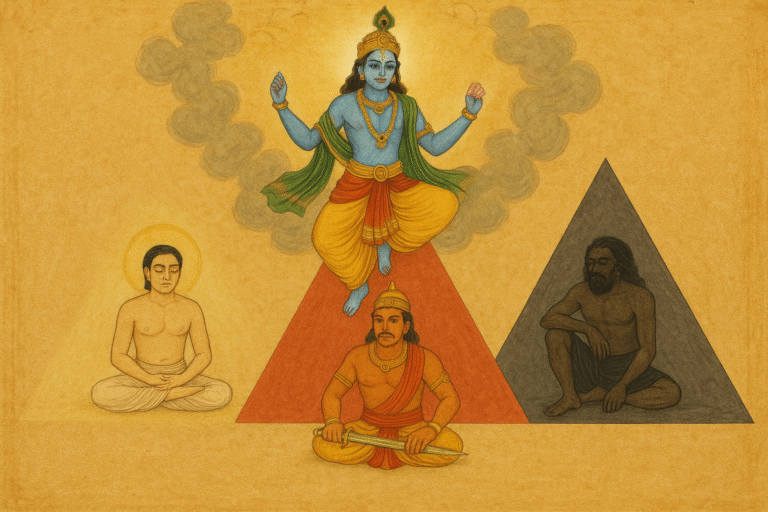Haridasa Ṭhākura: The Namacharya of the Holy Name
Haridāsa Ṭhākura, revered as the Namacharya, revealed the limitless power of the Holy Name through his life of humility, tolerance, and unwavering chanting. Linked with Brahmā’s repentance from the Brahma-mohana-līlā, his appearance teaches that devotion transcends birth. From surviving brutal persecution to transforming hearts, his life is a timeless guide for chanting Krishna’s Names.

Among the countless associates of Sri Chaitanya Mahaprabhu, Haridasa Ṭhākura shines as a jewel of humility, tolerance, and steadfast devotion to the chanting of the Holy Names. Though born in a Muslim family, he became the Namacharya—the teacher of chanting—for the entire world. His life pastimes, especially those of the prostitute’s attempt to seduce him and his beating in 22 marketplaces, are immortalized in Sri Chaitanya Charitamrita and other Gaudiya Vaishnava texts. These incidents not only highlight his unshakable devotion but also demonstrate how the power of the Holy Name transforms hearts.
Appearance Day of Haridasa Ṭhākura
The exact details of Haridasa Ṭhākura’s appearance are not widely recorded in scriptures, but Vaishnavas accept that he was born in a Muslim family in the late 15th century, in what is now Bangladesh. Despite his birth, he became one of the greatest devotees of Lord Krishna, proving that devotion is beyond birth or caste.
His appearance is celebrated by Gaudiya Vaishnavas with reverence as the day when the Namacharya descended to this world to demonstrate the glories of chanting the Holy Name.
The Prostitute Pastime: Transformation by the Holy Name
A wealthy landlord once became envious of Haridasa Ṭhākura’s growing fame and respect in society. To defame him, he hired a prostitute to seduce him while he chanted in solitude. The woman approached Haridasa at night, dressed alluringly, with the intention of trapping him.
But Haridasa, absorbed in his japa, welcomed her politely and requested,
“Please sit here and allow me to finish my rounds of chanting. Then I will fulfill your desire.”
Night after night, she came with the same intent. And night after night, Haridasa kept chanting—Hare Krishna Hare Krishna Krishna Krishna Hare Hare, Hare Rama Hare Rama Rama Rama Hare Hare—postponing her request, until her heart melted by the sound of the Holy Name.
Finally, after hearing the mantra continuously for three days, her desire for lustful enjoyment vanished. She fell at Haridasa’s feet, confessed her plot, and begged forgiveness. Haridasa blessed her, instructing her to give up her sinful life, sit in that same hut, and chant Krishna’s names. She followed sincerely, wore simple cloth, and lived as a saintly devotee thereafter.
Vaishnava Teaching
- The Holy Name purifies even the most fallen: Even a prostitute, socially rejected, was transformed into a pure devotee simply by hearing the Holy Name.
- A devotee is fearless and compassionate: Instead of condemning her, Haridasa gave her the highest gift—Krishna-bhakti.
- Lust becomes love: When touched by the Holy Name, material desires turn into devotion.
Beaten in 22 Marketplaces: The Triumph of Devotion
The local Muslim ruler, influenced by envious men, ordered Haridasa to be punished for spreading the chanting of Krishna’s names. Haridasa was arrested and beaten mercilessly in 22 marketplaces—so severely that any ordinary man would have died.
Yet Haridasa remained alive, chanting the Holy Name constantly. He prayed to the Lord:
“O Krishna, please forgive these men who are torturing me. They do not know what they are doing.”
Fearing punishment for failing to kill him, the executioners begged Haridasa for mercy. Out of compassion, Haridasa appeared lifeless, and they threw his body into the Ganges. Miraculously, Haridasa emerged safely, continuing his chanting as if nothing had happened.
Vaishnava Teaching
- Tolerance greater than a tree: Like the verse from Sri Shikshashtakam—taror api sahishnuna—Haridasa tolerated extreme pain while blessing his tormentors.
- The Holy Name protects: Even death could not touch him, for he was absorbed in Krishna’s Name.
- True saintliness means forgiveness: Instead of seeking revenge, he prayed for his enemies’ welfare.
Haridasa Ṭhākura’s Daily Practice
Haridasa Ṭhākura set the highest standard of chanting. He completed 192 rounds of the Hare Krishna maha-mantra daily (which equals approximately 300,000 names). His dedication shows the unlimited power of the Holy Name and the goal of constant remembrance of Krishna.
His Disappearance Day
Haridasa Ṭhākura disappeared from this world in the year 1534, at Jagannatha Puri. Feeling separation from Lord Chaitanya, he expressed his desire to leave before Mahaprabhu. With great humility, he requested to keep Mahaprabhu’s lotus feet on his chest and gaze upon His face while chanting the Holy Name.
As he chanted “Sri Krishna Chaitanya” three times, he departed peacefully. Lord Chaitanya Mahaprabhu Himself carried Haridasa’s body, danced in kirtan, and personally performed his funeral rites at the seashore. He declared:
“The glory of Haridasa is so great that simply by remembering him, one becomes purified.”
Vaishnavas observe his disappearance day annually by fasting, chanting, and glorifying his life.
Haridasa Ṭhākura’s Fame and Glory
Because of his unmatched devotion, Haridasa became renowned as the Namacharya. Sri Chaitanya Mahaprabhu Himself glorified him, declaring that his position was higher than even the most learned brāhmaṇas. Though Haridasa always remained humble, the entire world bowed at his feet.
Lessons for Us
- Chanting is the essence: Haridasa’s 192 rounds daily show the centrality of the Holy Name.
- Humility attracts grace: He always saw himself as unworthy, yet the Lord Himself glorified him.
- Compassion transforms hearts: Even those who tried to harm him received his blessings.
- The Holy Name is the ultimate shelter: It can protect from death, purify the fallen, and bestow divine love.
Conclusion
The pastimes of Haridasa Ṭhākura remind us that devotion is not bound by birth, status, or circumstances. Whether in the company of a prostitute or under the blows of soldiers, Haridasa never gave up chanting Krishna’s names. His life is living proof of Lord Chaitanya’s teaching:
“In this age of Kali, there is no other way, no other way, no other way than chanting the Holy Names of the Lord.” (Bṛhan-nāradīya Purāṇa)
By remembering Haridasa Ṭhākura, the Namacharya, we too can gain faith in the transformative power of the Holy Name and learn to chant with humility, tolerance, and compassion.






